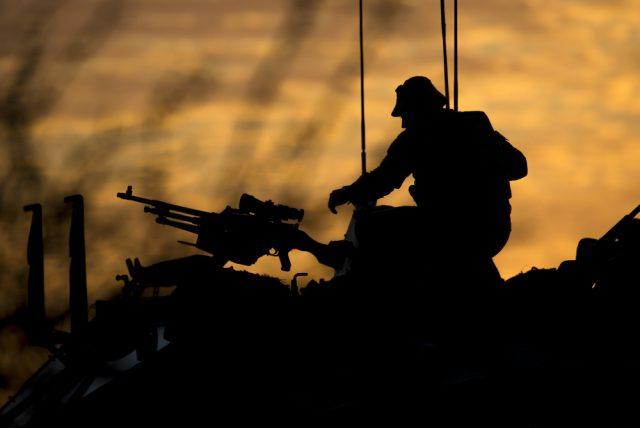
While lengthy counterinsurgency campaigns in Iraq and Afghanistan have provided our military with valuable operational experience, they haven’t necessarily prepared us for the next conflict. On the other hand, the Russo-Ukraine War provides some valuable insights into the challenges of future war. Russia’s modernised force and way of new generation warfare provides a key lesson: to enable close combat, a modern armoured warfare capability is necessary because armour saves lives. The Russian experience highlights the importance of armour within our own military modernisation program.
The 2016 Defence White Paper confirmed the government will ‘replace the Army’s current ageing fleet of mobility and reconnaissance vehicles with a new generation of armoured combat reconnaissance and infantry fighting vehicles, as well as tank upgrades.’
This capability acquisition is known in Defence as LAND 400 and is forecast to cost around $20 billion. Notably, it comes at a time when the Army’s only operationally deployed armoured (albeit lightly) vehicles are the Australian-made Bushmaster Protected Mobility Vehicle (PMV).
The mission profile for current operations is such that we don’t need to employ heavy armour. In what are now predominantly training missions in Iraq and Afghanistan, the PMV provides the right balance between mobility, firepower and protection.
So what about the future operating environment?
While the PMV has proven highly survivable against improvised explosive devices (IEDs), it lacks the necessary ballistic protection, mobility and lethality to engage in close combat. We don’t want to be caught wrong-footed—planning and training for the next war based on the last. That would be folly, particularly given we are in the midst of a period of such great strategic change with the rise of China and re-emergence of Russia. We must learn from events in the Ukraine and pay particular attention to Russia’s way of warfare, characterised by combined arms manoeuvre centred on the employment of armour.
We need a land force that is adequately trained and resourced for all contingencies from conventional state-on-state conflict through to countering the persistent threat of terrorism. Any scenario within the spectrum of conflict may require armoured capabilities, so we must be prepared.
The Land Combat Vehicle System (LCVS)—being delivered by LAND 400—is Army’s next generation of Armoured Fighting Vehicles (AFVs). It will replace or upgrade our current mounted combat capability, including:
- M1A1 AIM Main Battle Tank (MBT)
- Australian Light Armoured Vehicle (ASLAV)
- M113AS4 Armoured Personnel Carrier (APC)
LAND 400 will replace the ASLAV with a new combat reconnaissance vehicle (CRV) and the APC with a new infantry fighting vehicle (IFV). Additionally, the MBT will be upgraded to ensure it remains lethal and survivable against increasingly adaptive threats.
Why can’t the current ASLAV and APC fleets just be upgraded instead of replaced?
Both the ageing ASLAV and APC fleets are approaching technical and tactical obsolescence. The ASLAV has been in service for more than 30 years and the APC for more than 60 years. Although the APC has undergone a major upgrade in that time, it essentially still has the same survivability characteristics as the M113s that served in Vietnam. Clearly, Australia’s strategic environment has changed significantly since Vietnam; therefore, our military capabilities must keep pace with likely future threats.
The threat has advanced such that heavier armour and improved firepower are required. Regardless of whether it’s close combat against another AFV, protecting against an anti-tank guided missile, or a counterinsurgency scenario where the threat is predominantly IEDs, our service men and women deserve to be equipped with the best capabilities to fight, survive and win.
LAND 400 will provide the best AFV capability to deliver the government’s future strategic needs. It’s a big project that will deliver the LCVS over the next decade. That seems like a long, drawn-out process, but these are complex, expensive systems that will remain in service beyond 2050. As such, we need to invest wisely.
Although they will be military off the shelf acquisitions, Defence is taking the necessary time to properly test and evaluate each down-selected option to ensure our armoured cavalry regiments are equipped with the right close combat capabilities in the future. Throughout the process, LAND 400 will have to compromise and carefully balance the need for protection, firepower, mobility and capacity.
The new LCVS will be deployable in the Air Force’s C-17 Globemaster III aircraft and the Navy’s Landing Helicopter Dock (LHD) ships, enabling the strategic reach necessary for future joint operations. The vehicles will be digitally networked with air and maritime capabilities to enable the joint force to operate in a multi-domain environment.
Through LAND 400, the Australian Army is modernising its close combat capability. The other services are undergoing similar force modernisation: the RAAF is upgrading the F/A-18 to F35 Lightning II, and the RAN is upgrading its guided missile frigate (FFG) to the Air Warfare Destroyer. These are responsible capital acquisitions that will deliver more potent and lethal joint effects. It’s an insurance policy for the future.
Reflecting on my operational experiences in East Timor, Lebanon, Sudan, Afghanistan and Iraq: from close combat to counterterrorism, armour saves lives.